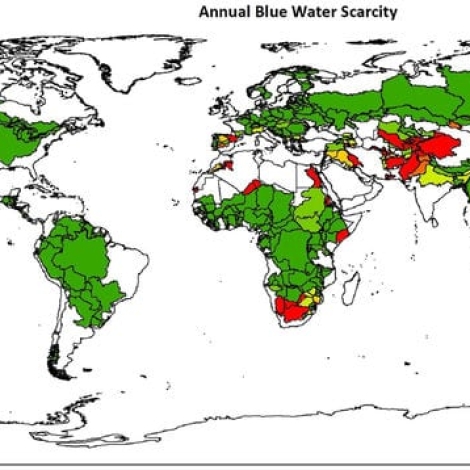Mapping monthly water availability in basins that cross country borders found 1.6 billion people worldwide who live with severe scarcity for at least one month out of the year. Nearly one billion people experience severe water scarcity for 3-12 months each year, and 13 basins between countries suffer severe water scarcity every month of the year, according to findings published February 2018 in Nature.
“We did the research in order to estimate the number of people and country-basin units that will be impacted at a monthly and seasonal time step,” the study’s first author Dr. Dagmawi Degefu, an environmental engineer at China Three Gorges University in Yichang, China and Ryerson University in Toronto, Canada, told E4C by email.
“Our work provided a general picture of the and its variation through time and space, but further studies at a river basin scale with updated data need to be done in the future in order to help the policy makers allocate and manage their shared water resources in sustainable manner,” Dr. Degefu says.
The sustainable management of the unevenly distributed fresh water resources holds the key to alleviate water scarcity
The researchers tried to correct for limitations they saw in past studies on water scarcity in two broad ways. First, they assessed scarcity each month rather than each year. Monthly data can show the changes in water availability over the year rather than the snapshot of a point in time that yearly data provides. Second, they analyzed transboundary basins, which, the researchers argue in their paper, is a useful geographical unit to consider. Each basin is not too large or too small to provide helpful data, unlike other studies that may have had those limitations. Also, management of basins on country borders can differ according to each country’s policies, and they can cause conflict.
“We were expecting the results because the water resource in most of transboundary river basins are being governed by riparian countries which differ in their socio-economic and environmental status,” Dr. Degefu says.
To generate their results, the researchers built a model in Arc GIS and populated it with data from past studies. Water footprint data, which suggests the amount of water produced and consumed in a given area, comes from a paper by M.M. Mekonnen, and A.Y. Hoekstra, National water footprint accounts: the green, blue and grey water footprint of production and consumption published in 2015 by the UNESCO Institute for Water Education. And the runoff data used to calculate the available water was obtained from a paper published in 2002 in the journal Global Biogeochemical Cycles, High-resolution fields of global runoff combining observed river discharge and simulated water balances, by Balázs M. Fekete and colleagues.
The researchers defined ‘water scarcity’ according to the water available for ecological services. ”Low’ scarcity is defined as water that is ‘untouched.’ On the other end of the spectrum, in areas with ‘severe’ scarcity, “the water apportioned for maintaining ecological services is significantly disturbed,” according to the research.
In total, the researchers examined 560 country-basin units of 248 transboundary river and lake basins. They found water scarcity for at least one month in 328 of the 560 country-basin units, representing 1.6 billion people, or 64 percent of the total population within transboundary river and lake basins. Water scarcity for 3-12 months occurs in 175 country-basin units home to nearly 1 billion people.
Thirteen country-basin units suffer severe water scarcity every month of the year, home to 44 million people. The researchers listed those basins:
Awash in Somalia and Djibouti, Gash in Sudan, Baraka in Eritrea and Sudan, Atui in Mauritania and Western Sahara, Kogilni in Moldova, Lake Chad in Libya, Nile in Eritrea and Egypt and Niger in Algeria.
Most of the people affected live below the Sahara Desert, above the equatorial region of Africa and in south Asia.
“The sustainable management of the unevenly distributed fresh water resources holds the key to alleviate water scarcity,” the researchers write.
See the paper: Mapping Monthly Water Scarcity in Global Transboundary Basins at Country-Basin Mesh Based Spatial Resolution

